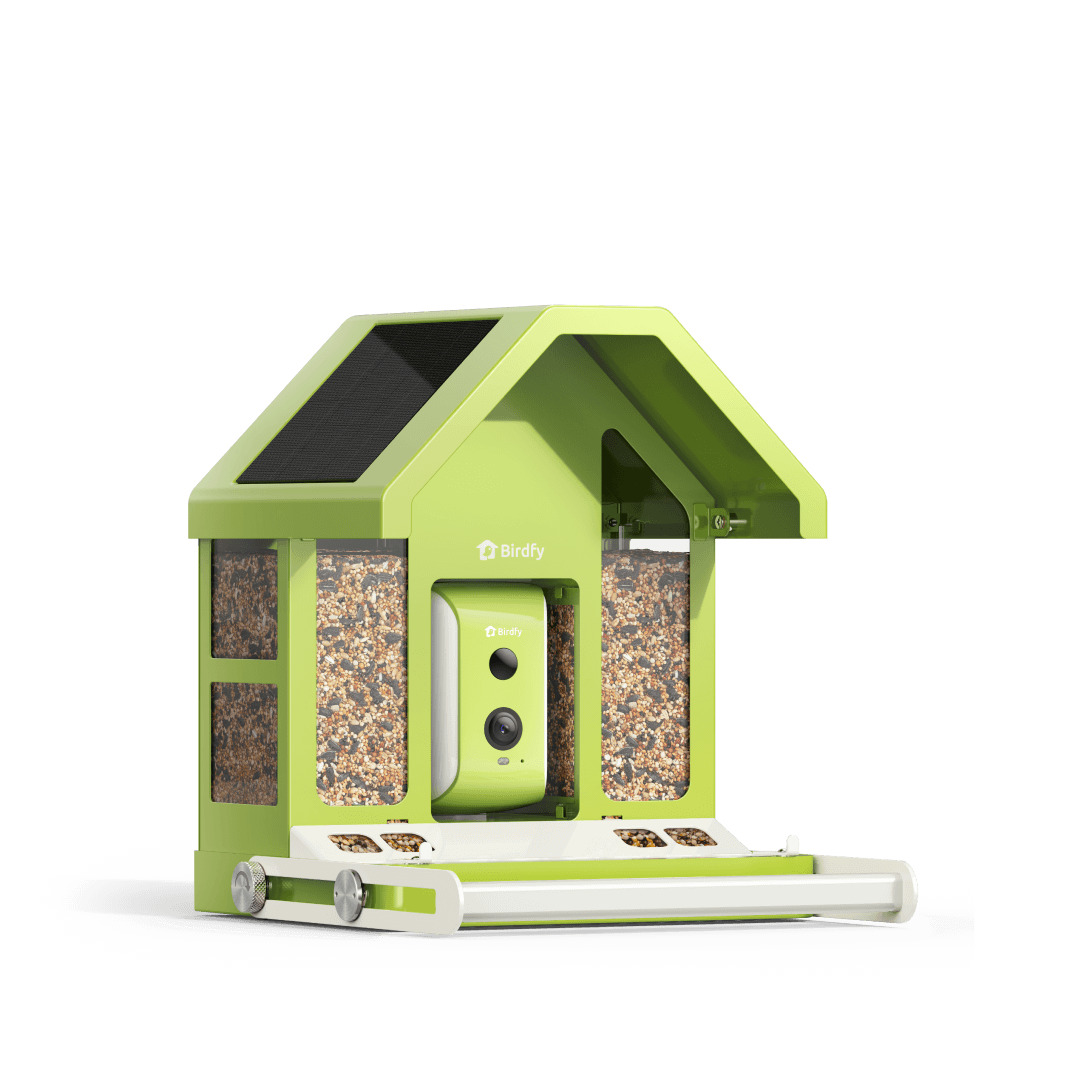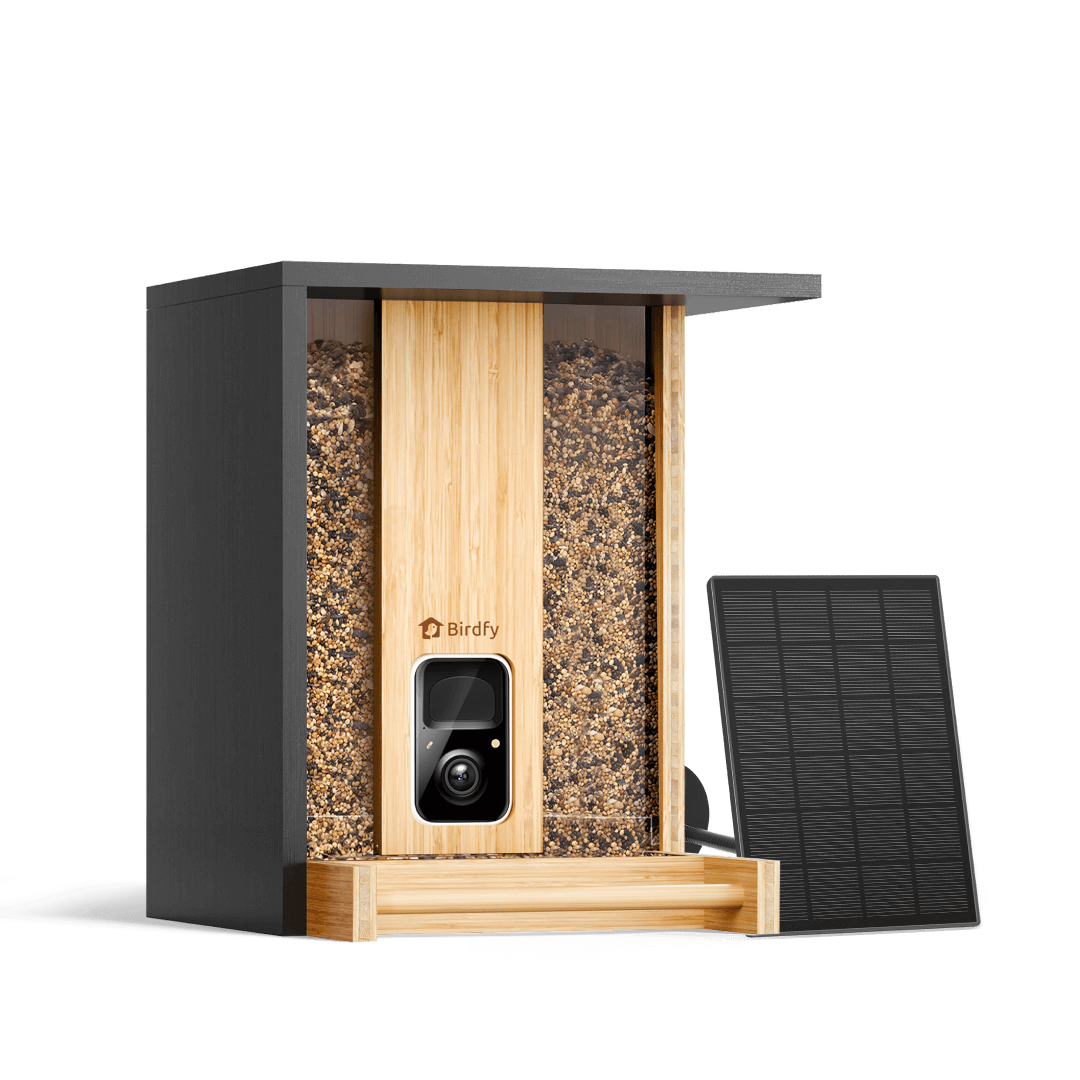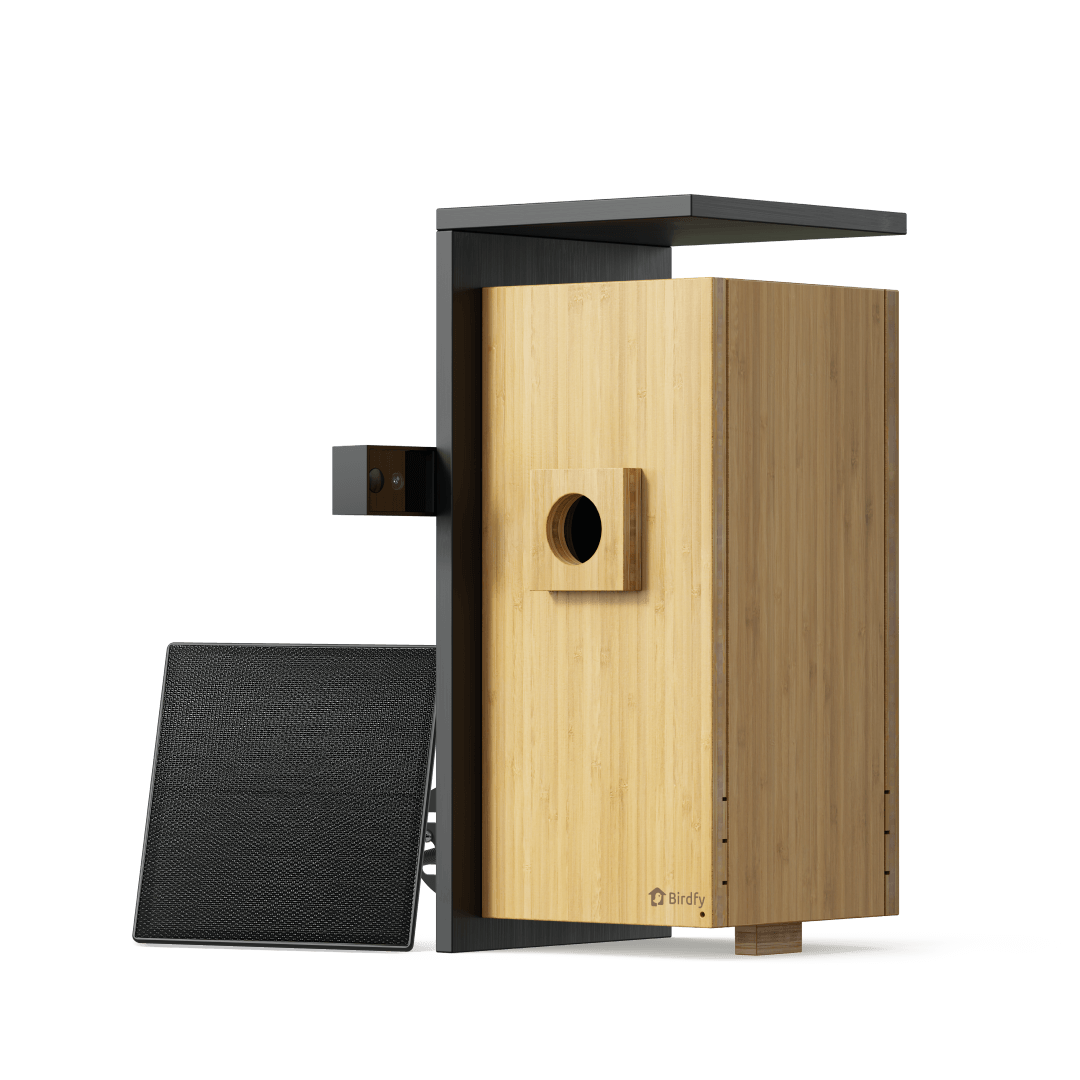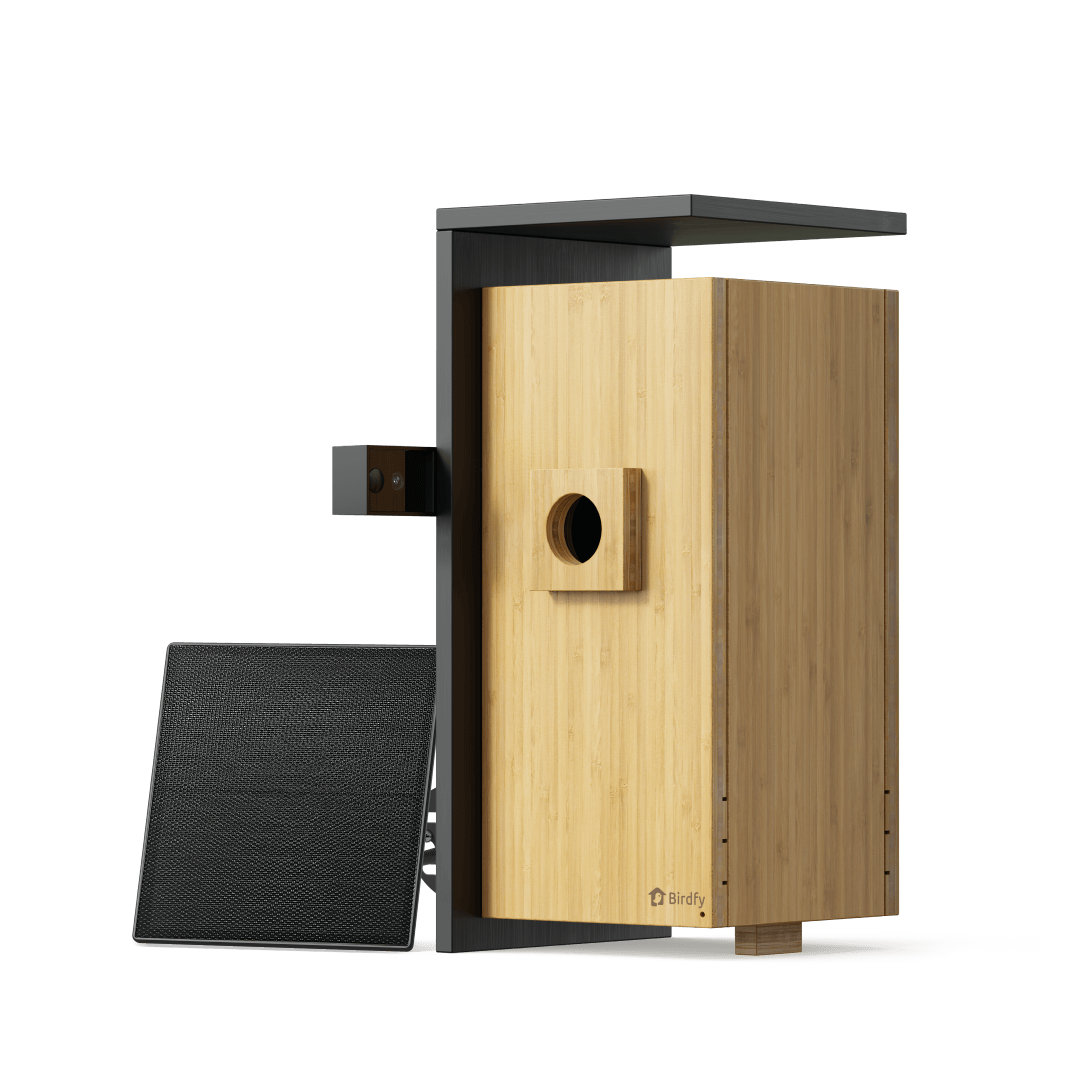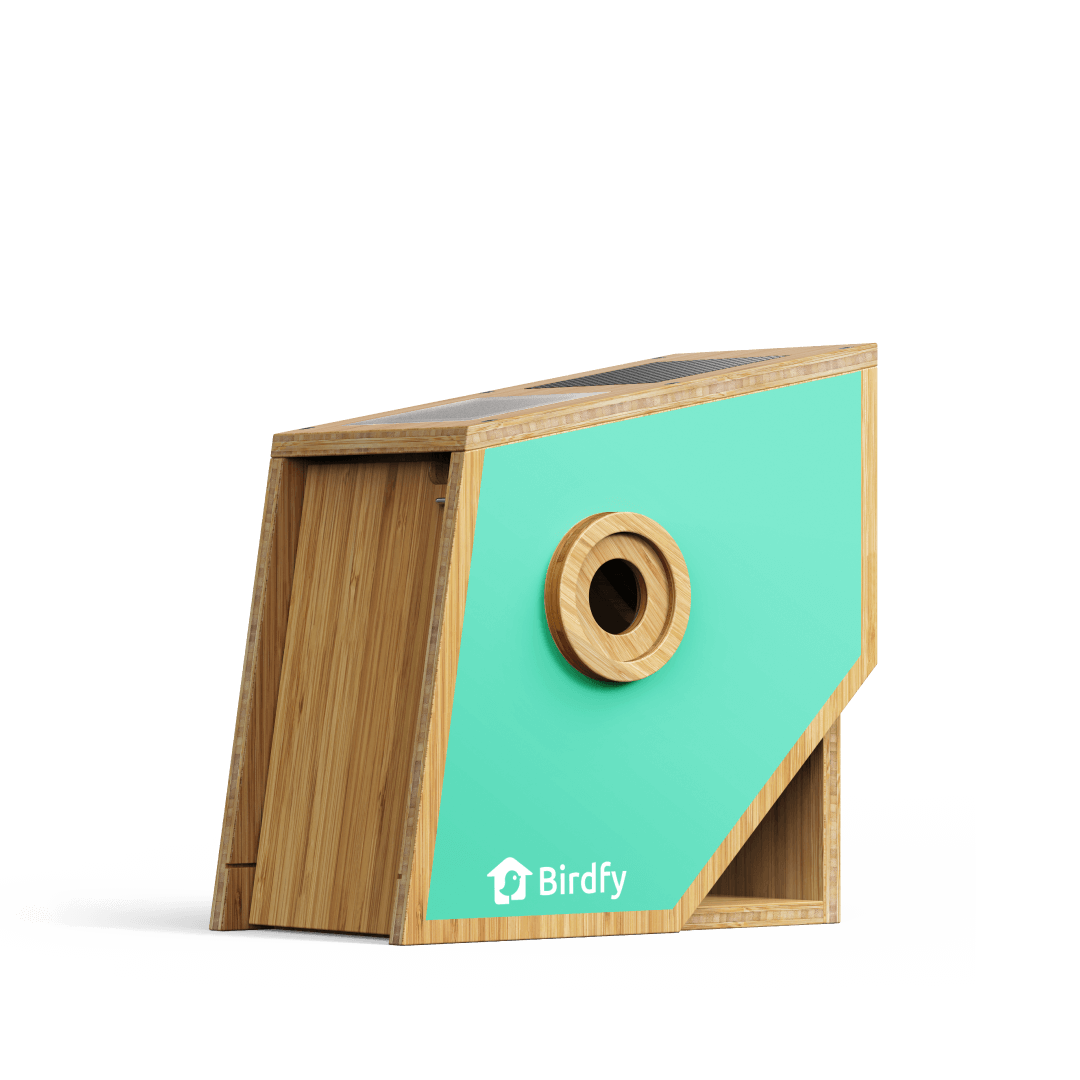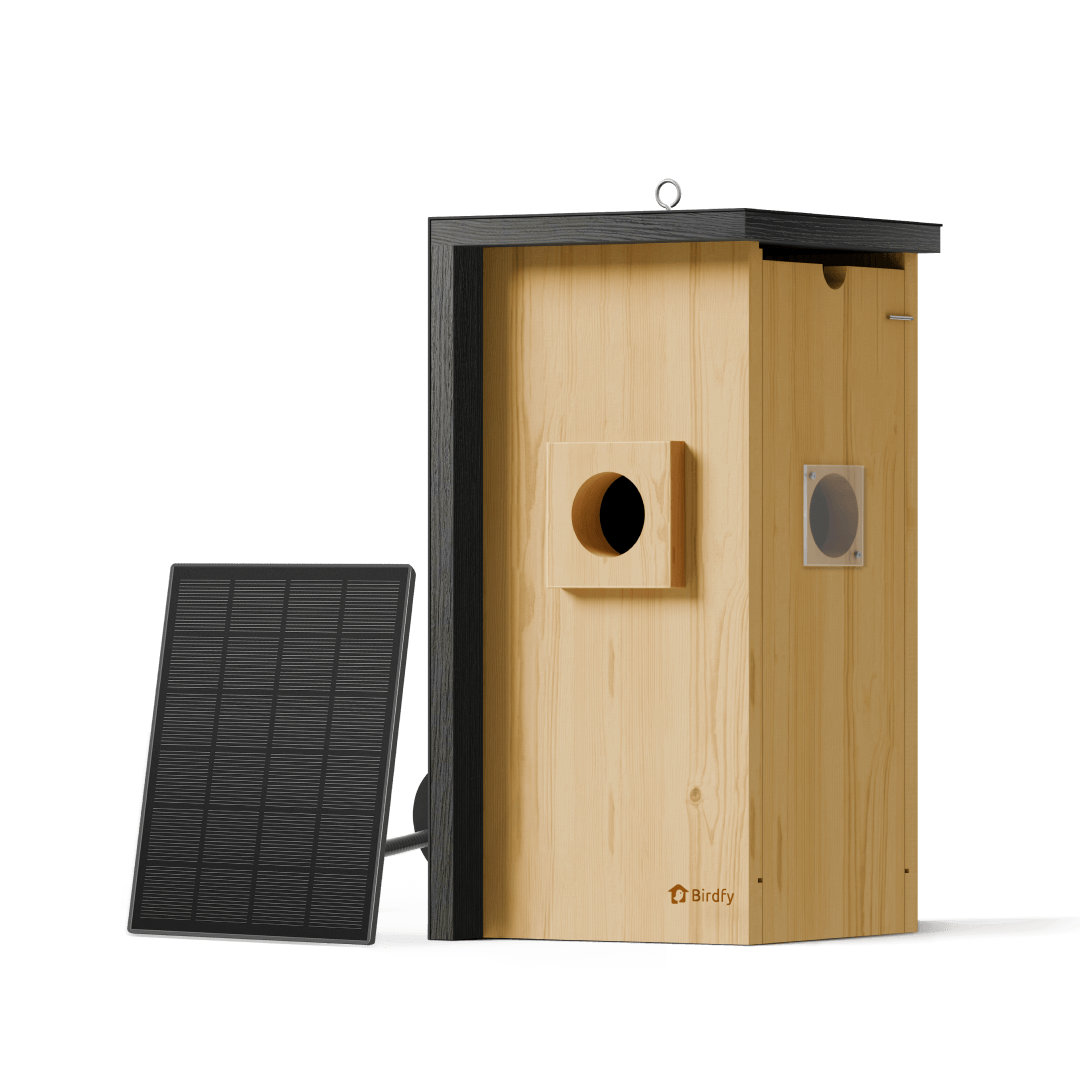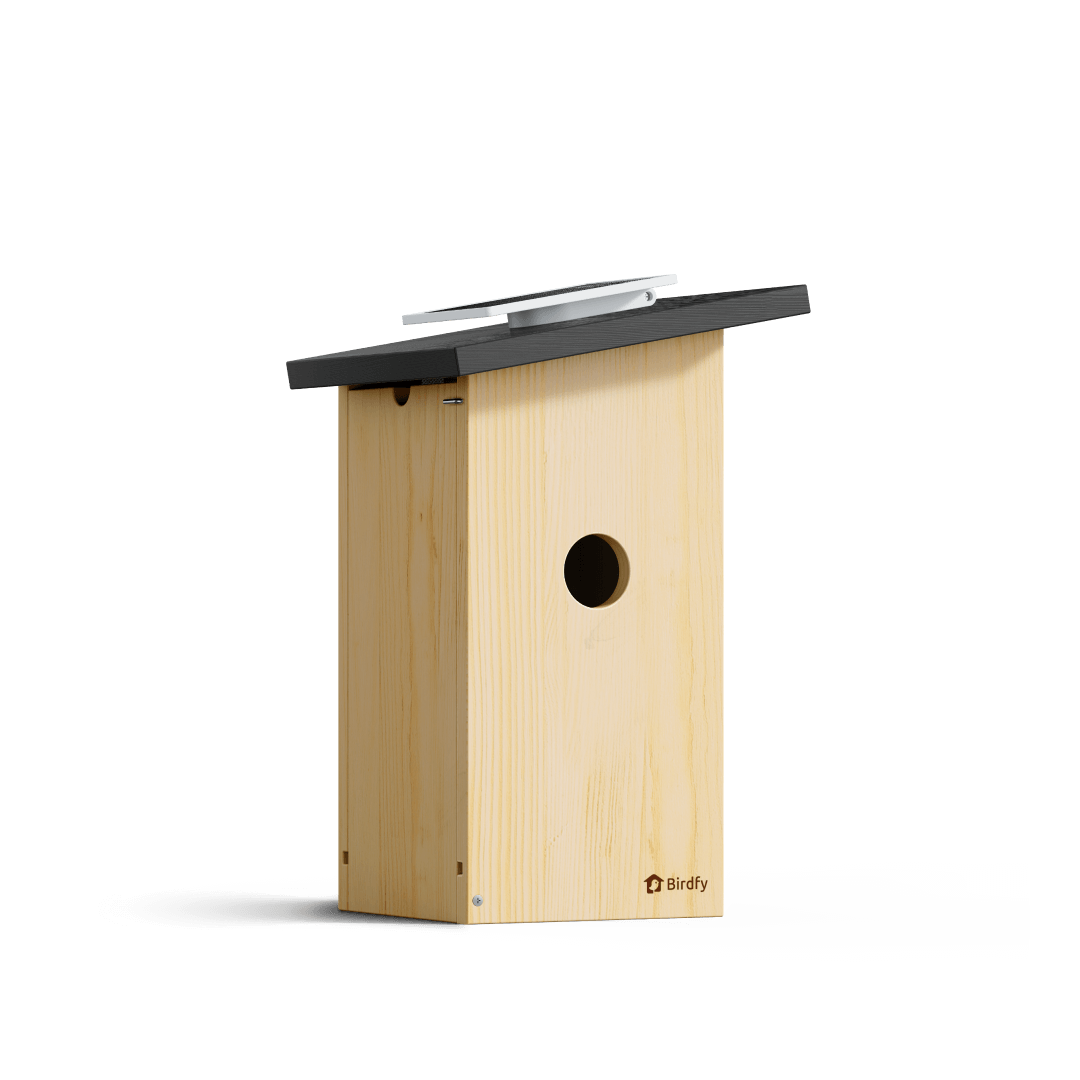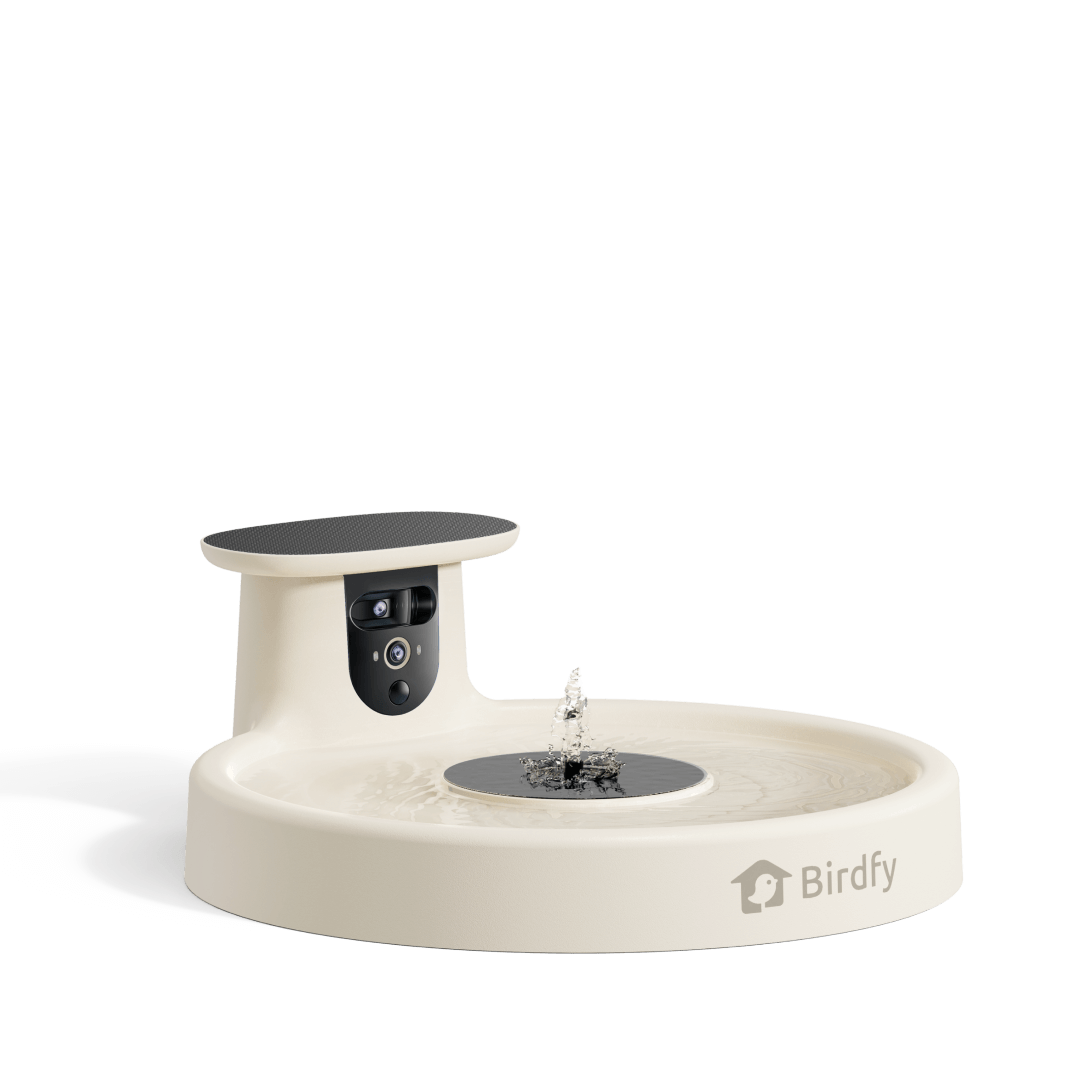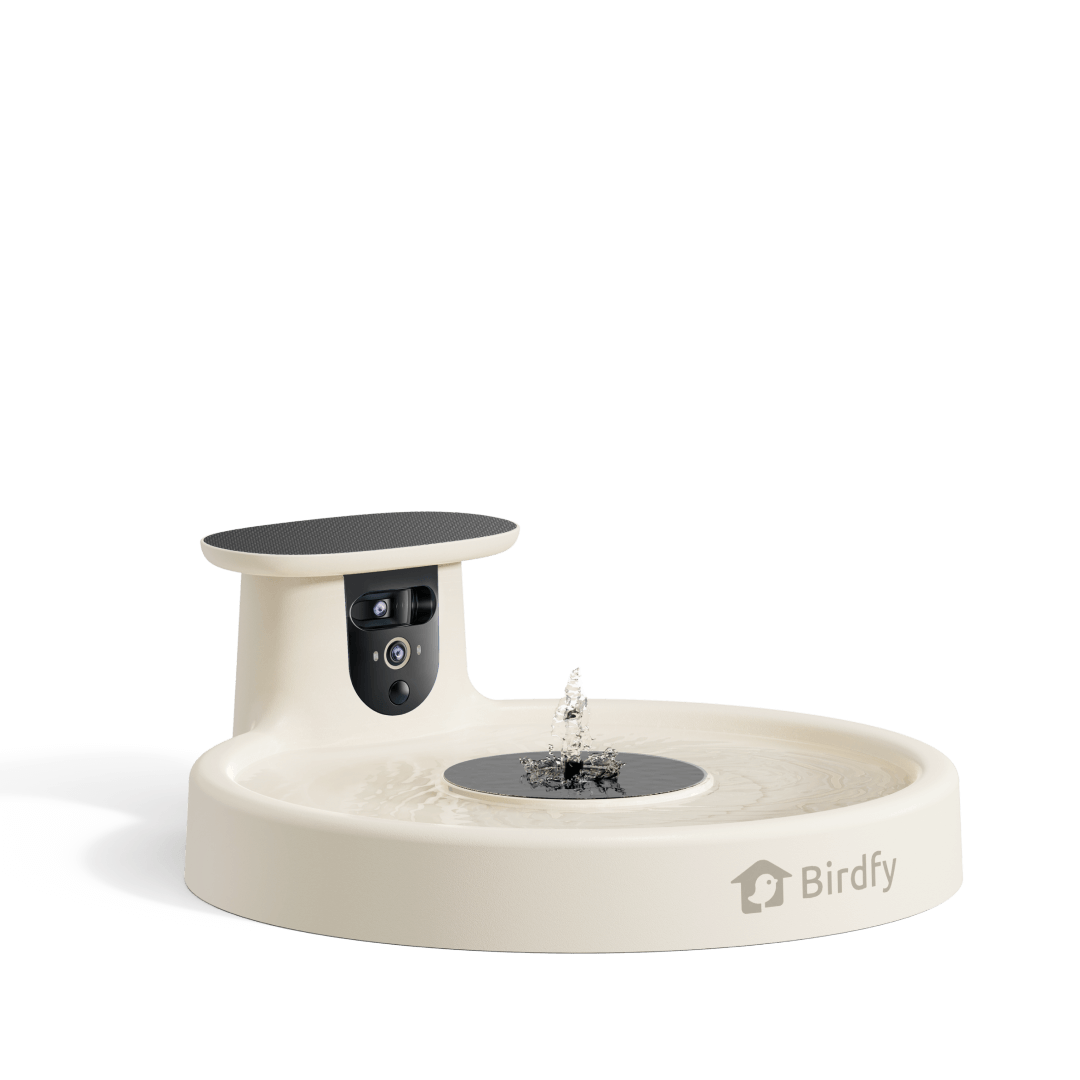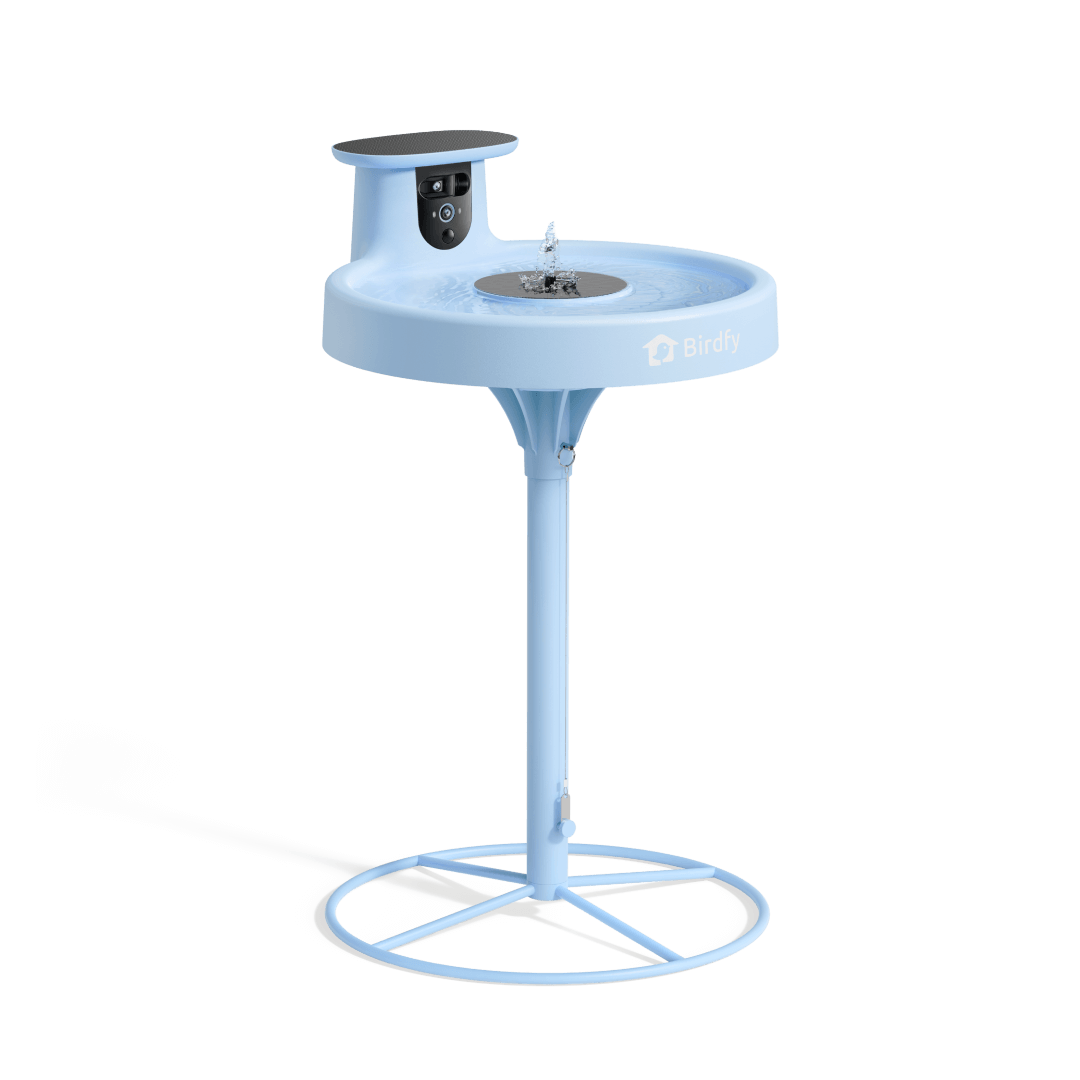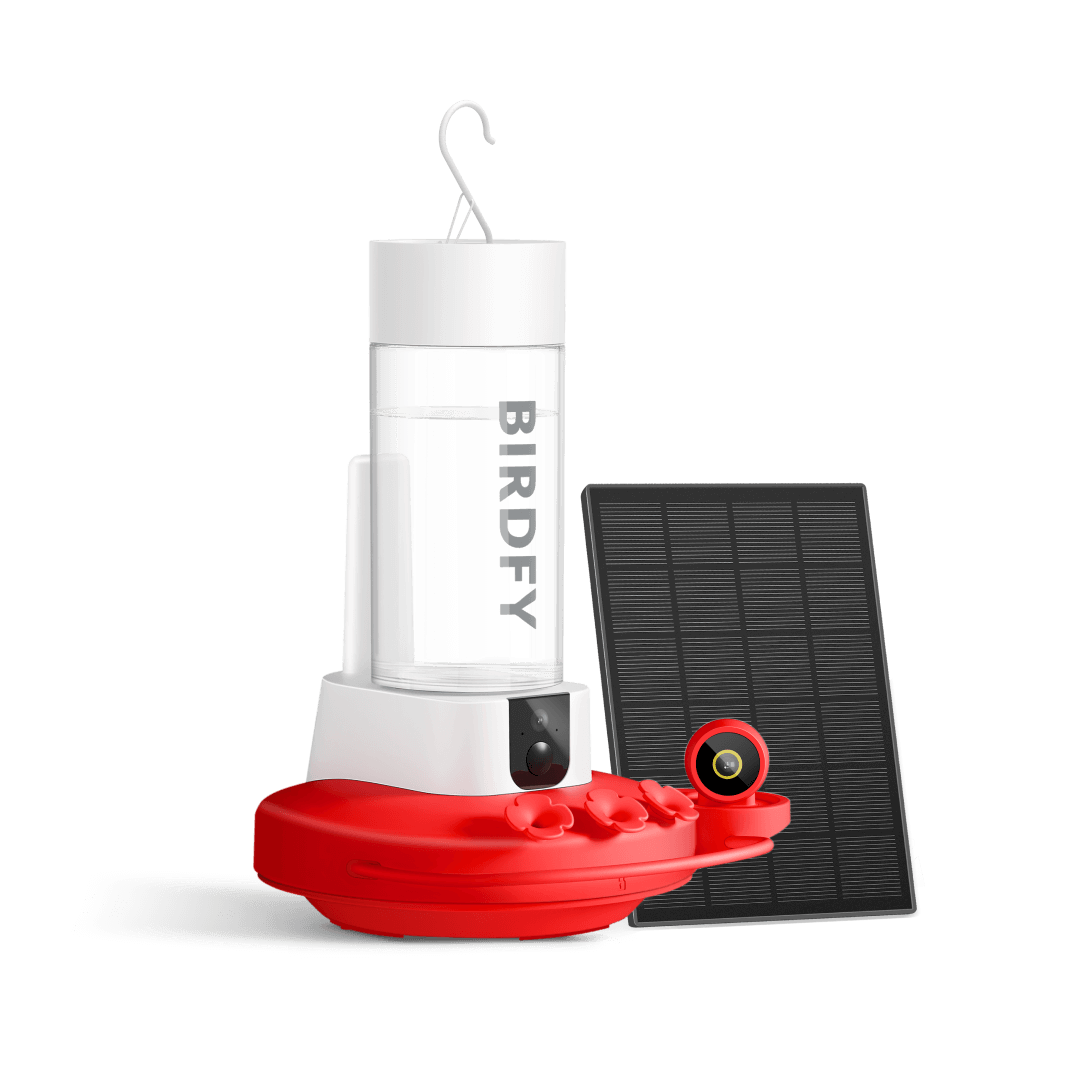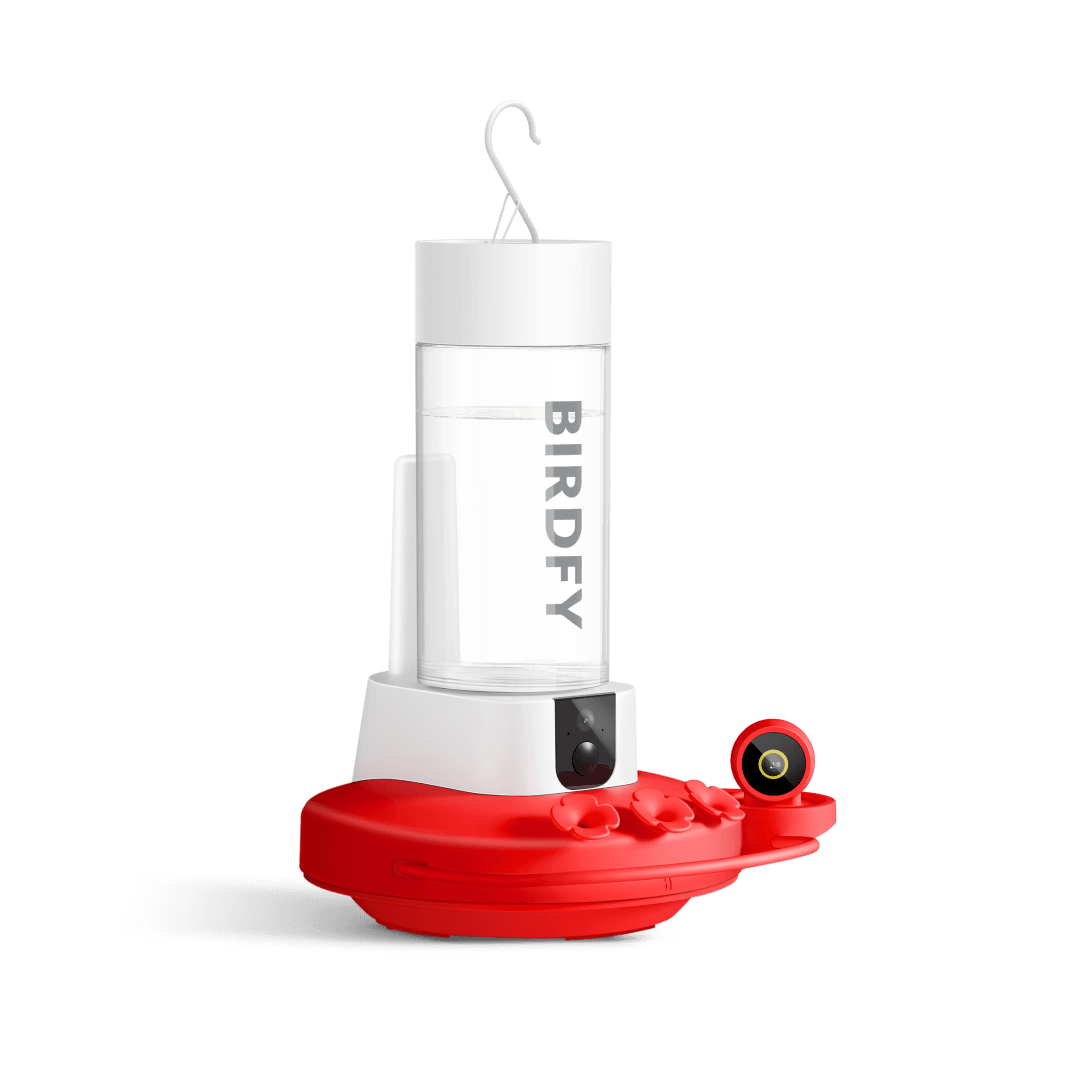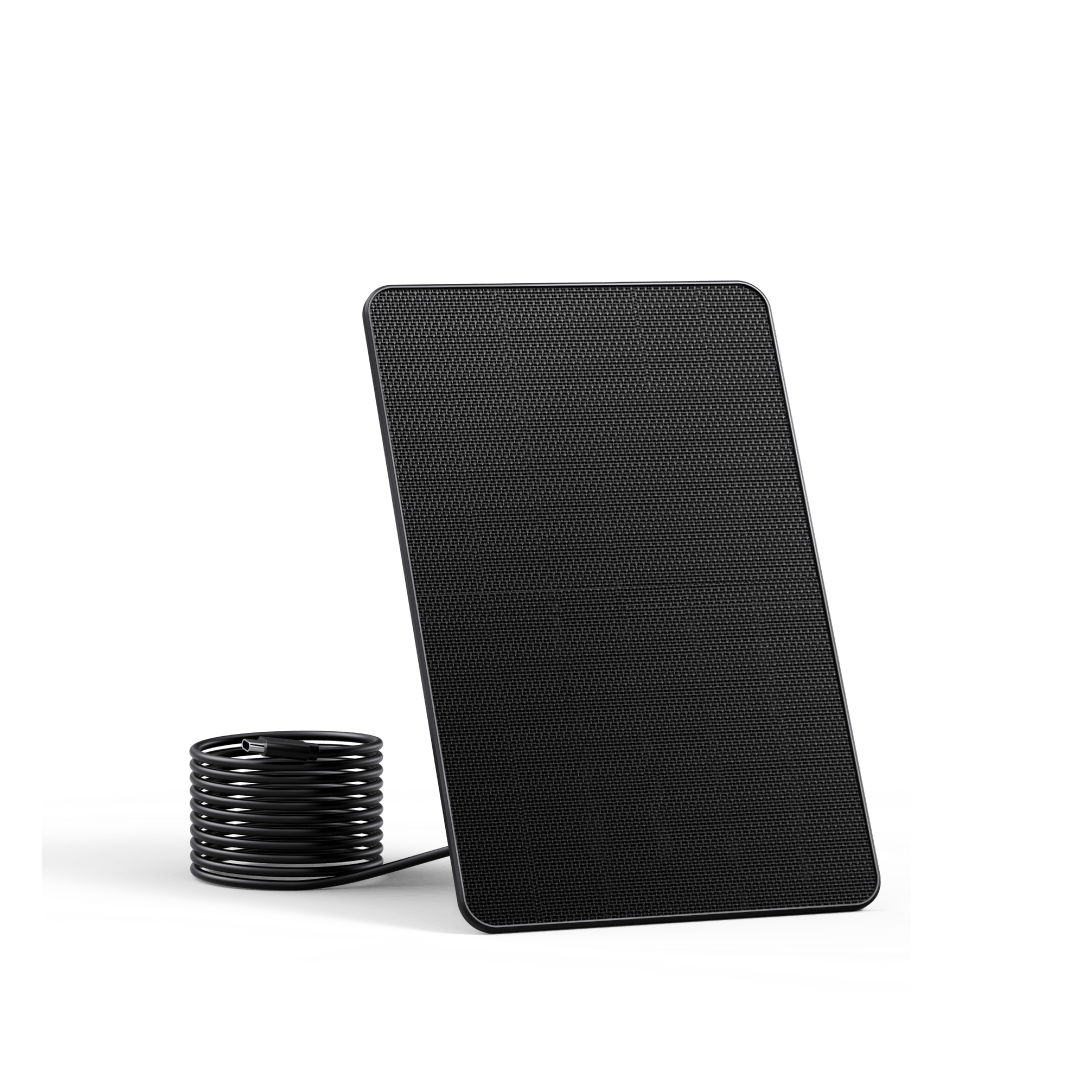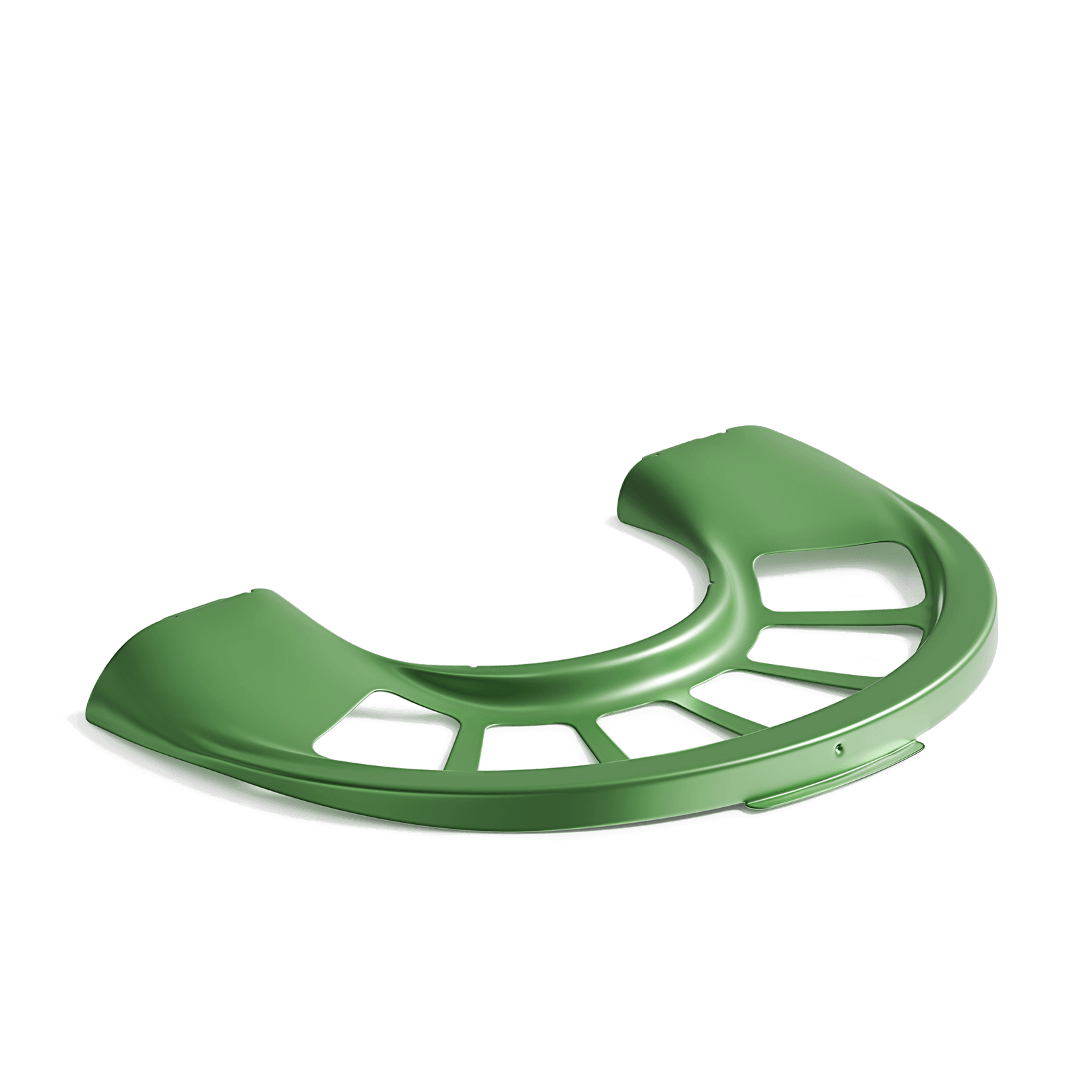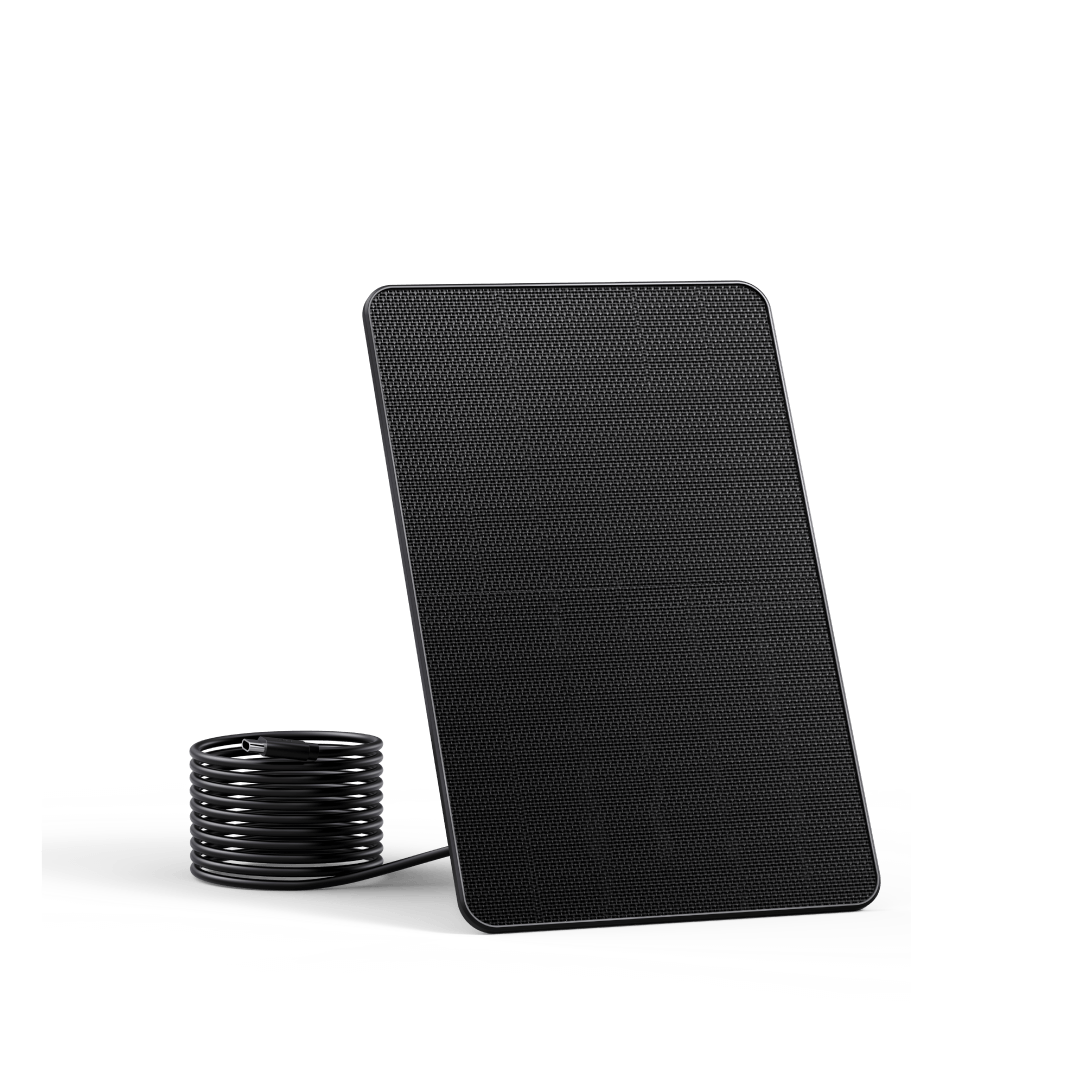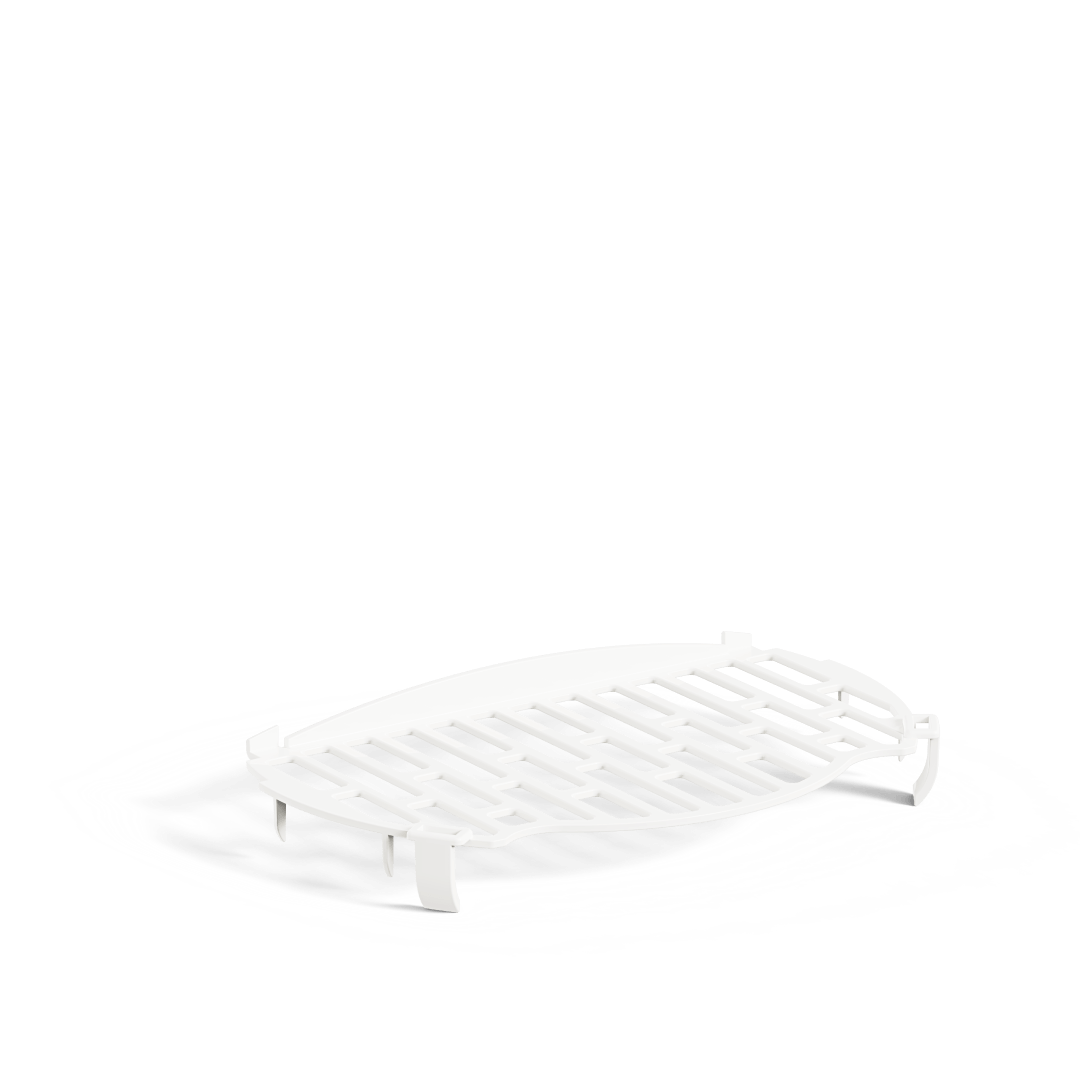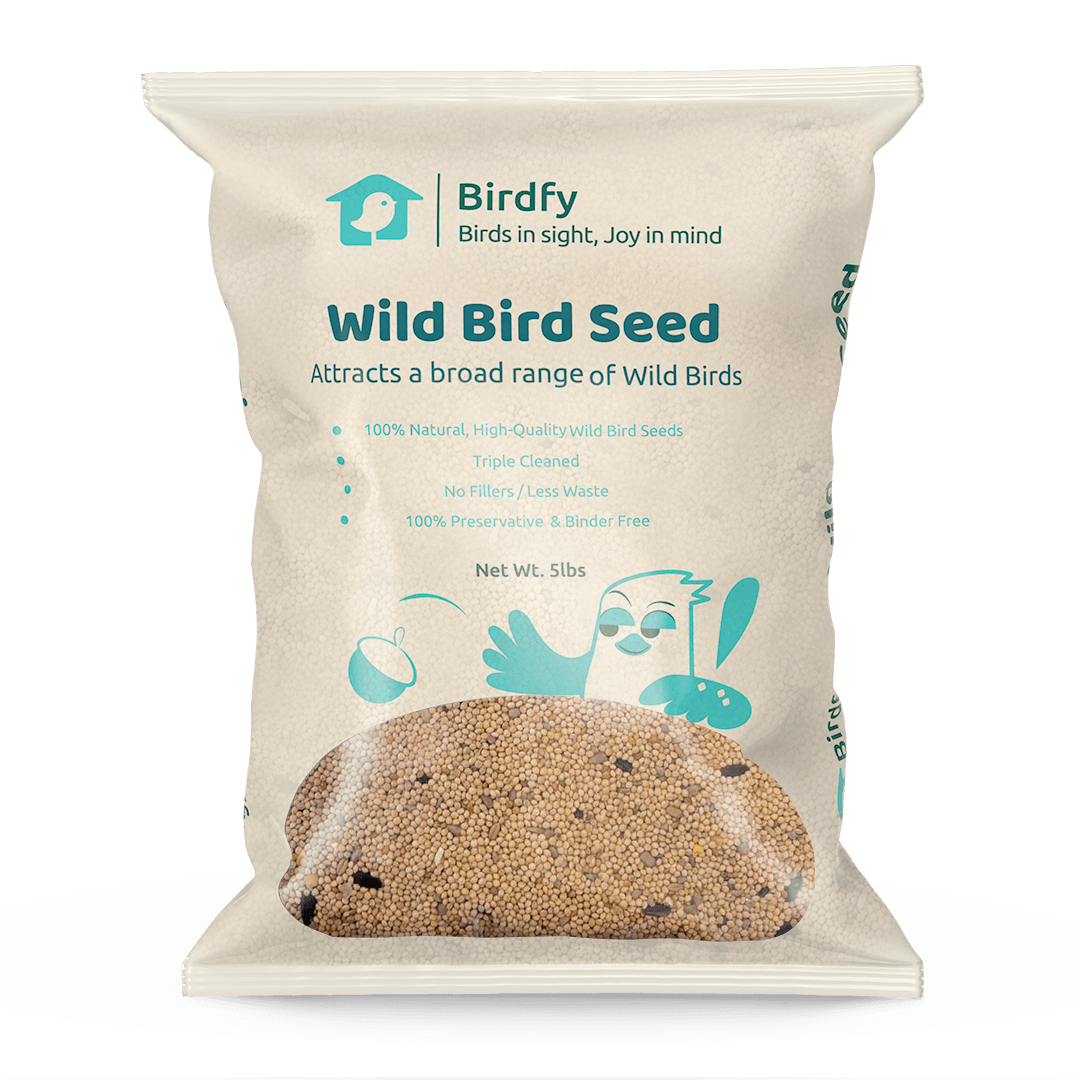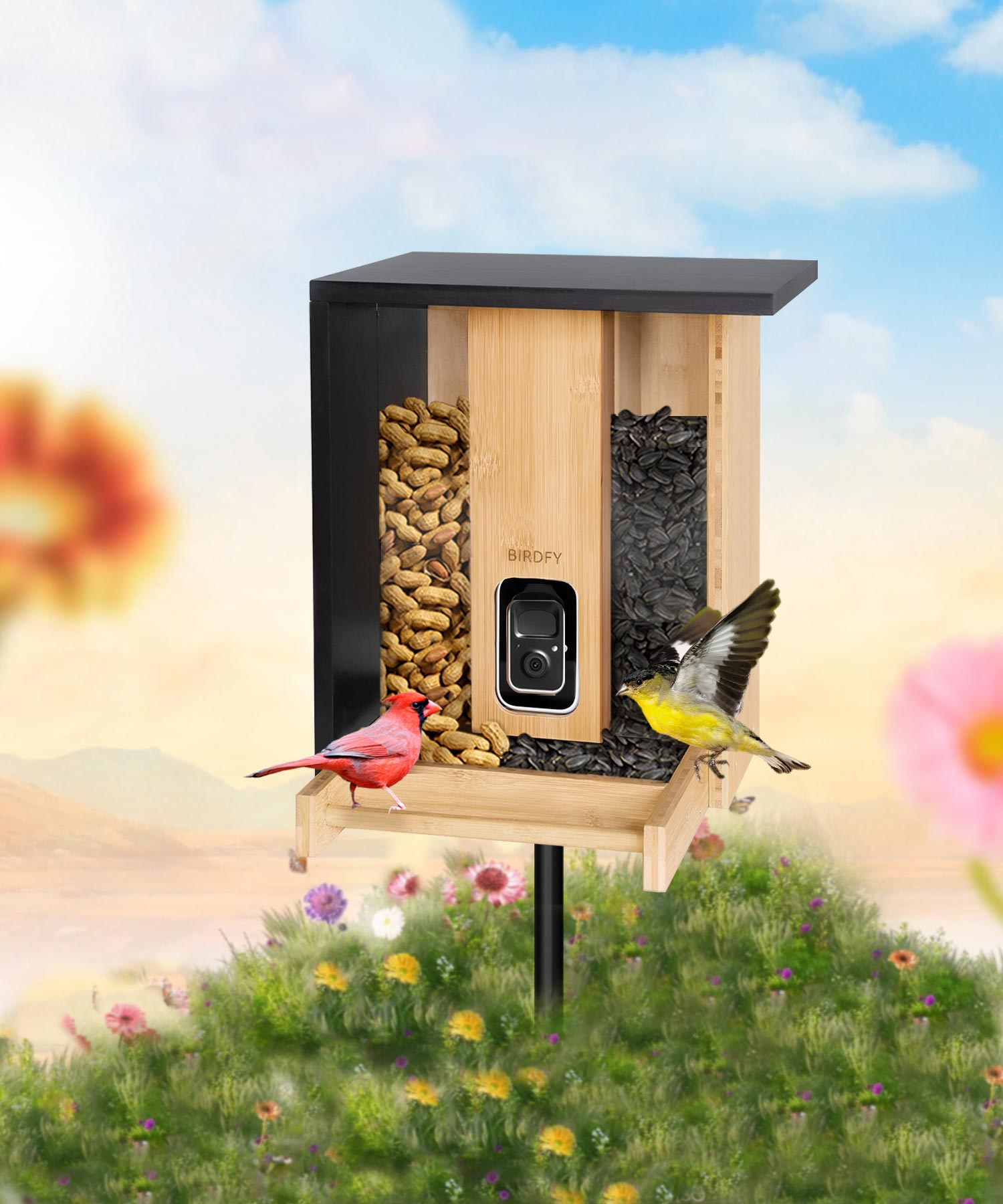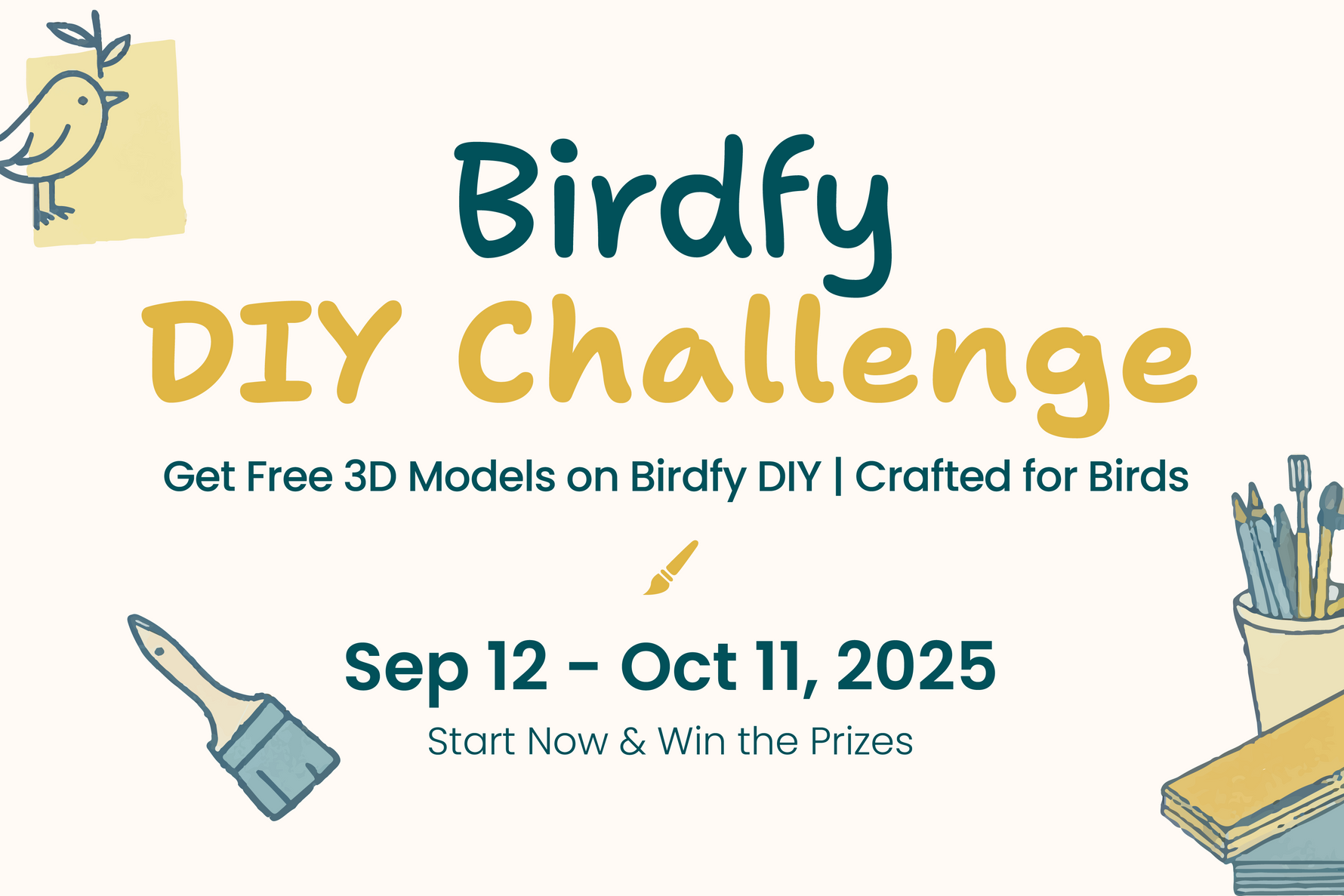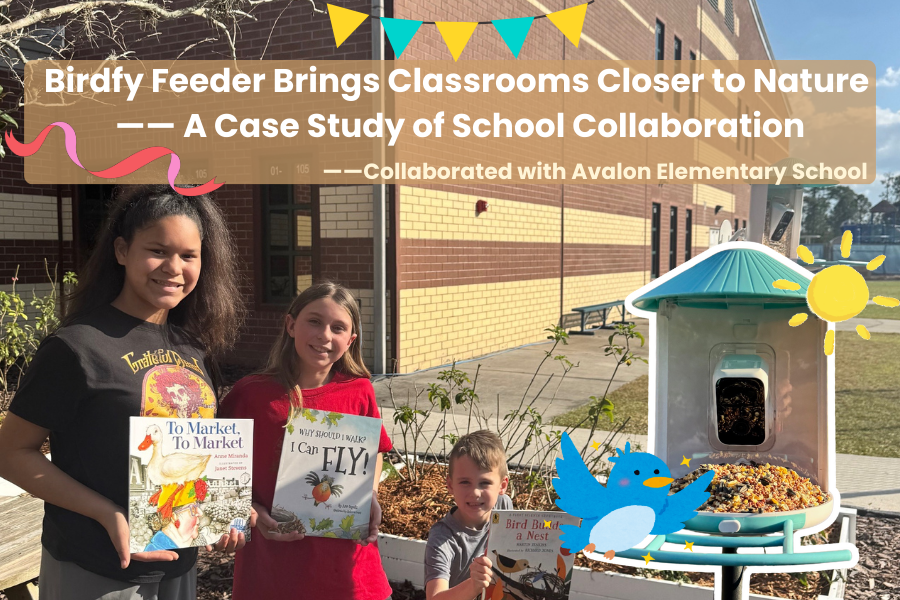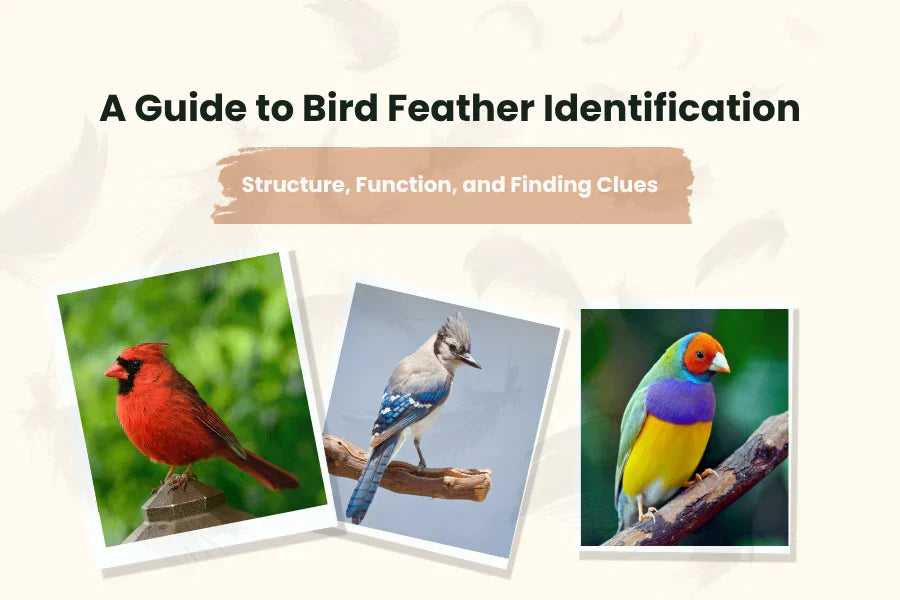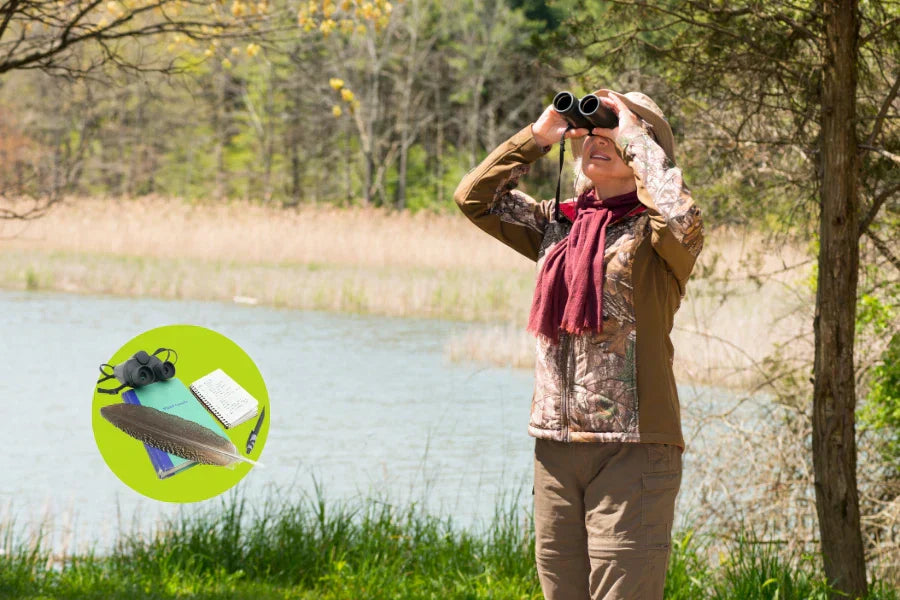20 Common Finch Species In The US And Europe
Introduction
Finches are among the most delightful birds to observe in the wild. They are small, highly spirited songbirds in the family Fringillidae characterized by shrill voices, bright coloration, and dietary versatility. They can be found in forests, fields, cities, or even mountains in the US and Europe. Finches, with their melodic trills and spectacular aerial maneuvers, are equally adored by bird lovers and those who may watch from their backyard.

This article explores the peculiarities of 20 different types of finches native to the United States and Europe. It identifies differences in size, color, food selection, and distribution among the different species. By understanding the habits and characteristics of these fascinating birds, you can better appreciate their role in the ecosystem and the joy they bring to nature lovers.
1. American Goldfinch
The American Goldfinch, also popularly known as the “wild canary,” is arguably one of the most famous finches in North America due to its bright yellow plumage and melodious song.

Habitat:
The American Goldfinch is a highly adaptable bird that effortlessly inhabits almost any environment, including open fields, grassland meadows, orchards, gardens, and suburban landscapes. It chooses habitats with rich imagers and food supplies, such as thistles, sunflower plants, and nests made from processed plants.
Appearance:
Males are bright lemon-yellow on the body and have black wings, crowns, and nape; females and non-breeding males are dull olive-yellow. During winter, both genders have a distinct brownish color.
Characteristics:
- Beak Type: A small, conical beak ideally shaped to help extract seeds from seed heads.
- Feather Type: Soft and lightweight, with bright summer plumage and duller winter feathers.
- Weight: 11-20 grams.
- Size: 11-14 cm.
- Wing Span: 19-22 cm.
- Life Span: It lives for 3-6 years, but the oldest in the wild is about 10.
Feeding Habits:
Primarily seed eaters, they favor thistle, sunflower, dandelion, and alder plants. They are often seen hanging upside down while feeding.
Mating Habits:
Breeding starts in the later part of summer. Males court females, providing food and singing to them, and flying in circles around the female. During the breeding period, they are known to be monogamous.
Fun Facts:
It undergoes a complete molt twice a year, and such behavior is quite individual for birds. This fact, along with the bright coloration of the plumage, adds to the bird’s vibrant appearance.
2. House Finch
The House finch is considered a highly adaptive and social bird. Its active, curious behavior and presence in habituated human territories make it easily distinguishable.

Habitat:
Initially found in the western United States, it has grown into other parts of North America and is fond of urban gardens, backyards, parks, and desert border surroundings.
Appearance:
Male House Finches have a red forehead, chest, and rump, which vary in saturation depending on diet. Females are brown with a streaked underbelly, allowing them to blend in convincingly well in their natural environment.
Characteristics:
- Beak Type: A short, broad, slightly curved type is better suited for crushing seeds and eating fruits.
- Feather Type: Dense and streaked, with males displaying vibrant red highlights.
- Weight: Approximately 16-27 grams.
- Size: 5-6 inches.
- Wing Span: 8-10 inches.
- Life Span: Usually, it’s 4-6 years, but some live longer depending on the appropriate environmental conditions.
Feeding Habits:
House Finches eat seeds, fruits, buds, and other plant matter. They are often seen at bird feeders and are attracted mainly through sunflower and millet seeds.
Mating Habits:
Males perform elaborate songs to get the attention of females, and they may add so many twists to their songs. They build nests in cavities or dense shrubs.
Fun Facts:
The brightness of the male's color depends exactly on his diet. The intake of carotenoids builds colors, so a bird with a befitting diet has brighter feathers.
3. European Goldfinch
The European Goldfinch, also known as the ‘Carduelis carduelis,’ is a chirpy bird socially active in Europe with vivid red feathers on the face.
Habitat:
This finch is found in open woods, gardens, plantations, orchards, and European meadows. It is commonly spotted in regions with dense thistles and other seed-bearing crops.
Appearance:
They wear a red mask across their faces, have black-and-white heads, and have yellow lines on their wings. Their skin is warm golden-brown.
Characteristics:
- Beak Type: Long, slender, and pointed, ideal for picking seeds from tight spaces.
- Feather Type: Sleek and smooth, with contrasting vibrant colors.
- Weight: 14-19 grams.
- Size: 12-14 cm.
- Wing Span: 21-25 cm.
- Life Span: European goldfinches live about 5-8 years, although some have been recorded to live up to 12 years.
Feeding Habits:
They feed mainly on thistle, teasel, and dandelion seeds. During winter, they can drop in at feeders to feed on sunflower seeds.
Mating Habits:
Males make soft songs accompanied by fluttering flights – a courtship display. These birds are usually monogamous during the breeding season but mate for life.
Fun Facts:
European Goldfinches are regarded as birds of the spirit that bring good luck. In Christianity, they are depicted with the Virgin Mary.
4. Purple Finch
The Purple Finch is a medium-sized finch with a raspberry-colored appearance. It is often confused with the House Finch.
Habitat:
This finch prefers habitats in coniferous zones, mixed forests, and residential areas, especially in the northeastern United States.

Appearance:
Males are covered in a rich raspberry red color, which is familiar with its brown wings, while females are brown and white scribbled.
Characteristics:
- Beak Type: Thick and conical, suitable for cracking large seeds.
- Feather Type: Soft with a rich raspberry-red wash in males.
- Weight: About 18-28 grams.
- Size: Roughly 15 cm in length.
- Wing Span: 22-26 cm.
- Life Span: The Purple Finch has a 3-6 years lifespan in the wild.
Feeding Habits:
Seeds, berries, and buds are part of their diet. They are reported to feed in tall trees and at feeders.
Mating Habits:
Males sing rather pleasant, trilling songs for mating and may be accompanied by display flight with wings.
Fun Facts:
The Purple Finch is the official bird of the Nearctic Region. Naturalist Roger Tory Peterson once described it as a ‘sparrow dipped in raspberry juice.’
5. Lesser Goldfinch
This finch has bright, colorful feathers, a well-known song, and is typically found in the southwest of America.
Habitat:
Lesser Goldfinches are found in open country, deserts, and gardens with many shrubs and trees bearing seeds.
Appearance:
Males are yellow with a black cap and greenish back, while females are duller yellow-brown.
Characteristics:
- Beak Type: Small and conical, which helps it access seeds trapped in chaff and alder cones.
- Feather Type: Smooth, with bright yellow underparts.
- Weight: 8-11 grams.
- Size: 10-11 cm.
- Wing Span: 18-20 cm.
- Life Span: Typically, 3-5 years in the wild.
Feeding Habits:
Most of its diet consists of sunflower seeds, dandelions, and thistles.
Mating Habits:
Males give a flight display described as fluttering flights and sing to attract females' attention. Both birds create cup-like nests from collected materials placed in shrubs or trees.
Fun Facts:
The Lesser Goldfinches sing and copy the songs of other birds and imitate them.
6. Chaffinch
The Chaffinch is one of the commonest finches in Europe. It can be easily identified by its bright red undertoned plumage and grey and black chestnut wings, and its beautiful trilling song.
Habitat:
In Europe, chaffinches prefer to live in woodlands, gardens, and hedgerows and seem comfortable in habitats modified by human activity.
Appearance:
The males have somewhat pinkish underparts, a blue-gray crown, and a greenish rump, while the females are more or less brown.
Characteristics:
- Beak Type: Strong and pointed, suited for seeds and insects.
- Feather Type: Dense, with striking wing bars.
- Weight: 18-24 grams.
- Size: 14-16 cm.
- Wing Span: 24-28 cm.
- Life Span: Chaffinches are birds with a natural lifespan of about 3 – 5 years in the wild.
Feeding Habits:
It eats seeds, berries, and small insects, especially during breeding.
Mating Habits:
Males sing complex songs to defend their territory and attract the attention of females. They usually build nests on tree forks.
Fun Facts:
The song of the Chaffinch differs from place to place, just as the way people from different parts of the world speak.
7. Common Redpoll
This tiny bird, often found in northern areas, has a red forehead and always seems happy.
Habitat:
The family of Common Redpoll mainly inhabits tundra, boreal forest, and open, arctic scrubland in Europe and North America.
Appearance:
It has streaked brown and white underparts with a red forehead and a black chin.
Characteristics:
- Beak Type: Small and pointed, adapted for extracting seeds.
- Feather Type: Fluffy, providing insulation in cold climates.
- Weight: 11-20 grams.
- Size: 12-14 cm.
- Wing Span: 20-22 cm.
- Life Span: They can live up to 7 years in the wild.
Feeding Habits:
They mainly feed on birch and alder seeds, though they can take other food in loose flocks.
Mating Habits:
During courtship, males perform flight displays and bring food to females.
Fun Facts:
It can temporarily hold seeds in its throat pouch, feed quickly, and digest later.
8. Greenfinch
A bright green and yellow bird with two-tone wings, the Greenfinch is a familiar bird found in gardens on the European continent.

Habitat:
They are usually located in woodlands, hedgerows, parks, and gardens on this ground.
Appearance:
These are bright green with yellow spots on their wings, while the females are gray-green with mere yellow lining.
Characteristics:
- Beak Type: Thick and conical, ideal for seed cracking.
- Feather Type: Smooth and vibrant.
- Weight: 18-29 grams.
- Size: 14-16 cm.
- Wing Span: 25-27 cm.
- Life Span: Typically lives 2-5 years in the wild.
Feeding Habits:
Greenfinches have diverse diets comprising seeds, berries, and insects and flock to feeders.
Mating Habits:
Males have a flying dance called the “butterfly”, through which they attract the females.
Fun Facts:
Greenfinches can be observed all year round in large groups, especially in winter.
9. Hawfinch
The Hawfinch is more significant than other regular finches from Europe. It has a strong beak and a tendency to hide.
Habitat:
Preferred habitat includes established deciduous woods, old orchards, and gardens containing large trees.
Appearance:
Hawfinches have stocky and heavy bodies, large heads, and bright brown, black, and white coloration.
Characteristics:
- Beak Type: Very powerful, able to split even such seeds as cherry, if there are any.
- Feather Type: Dense and smooth.
- Weight: 48-62 grams.
- Size: 16-18 cm.
- Wing Span: 29-33 cm.
- Life Span: These interesting species typically live for 5-7 years of age.
Feeding Habits:
The food comprises seeds, berries, and insects seldom and is not as frequently consumed as in winter months.
Mating Habits:
Males provide females with quiet calls and displays, and pairs are monogamous.
Fun Facts:
Hawfinches are shy and elusive, making them a rare sight for birdwatchers.
10. Goldfinch
The Eurasian Goldfinch is known for its brightly colored red face and pleasant, ringing call.

Habitat:
It prefers savannah, rocky, montane, lowland forests, grasslands, cultivated plains, pastures, and gardens.
Appearance:
Goldfinches have a red face mask and a black and white head. They also have golden wing bars.
Characteristics:
- Beak Type: Long and slender, perfect for extracting seeds.
- Feather Type: Sleek and colorful.
- Weight: 14-19 grams.
- Size: 12-14 cm.
- Wing Span: 21-25 cm.
- Life Span: These birds have a relatively low life expectancy that ranges from 5 to 8 years on average.
Feeding Habits:
Although the main diet consists of seeds, they preferentially feed on thistle and teasel seeds.
Mating Habits:
Males display flapping of wings and produce vocals to attract females.
Fun Facts:
In some folklore, goldfinches are said to represent wealth and joy.
11. Bullfinch
The Bullfinch is a striking finch with a stout body and a soft, sad call.

Habitat:
It grows in woodland, hedge bottomlands, and gardens, especially in North Europe and Asia.
Appearance:
Adult males have bright pinkish-red vents throughout, while females are dull brownish-grey. Both genders have a black cap and robust bill.
Characteristics:
- Beak Type: Short and thick, ideal for buds and seeds.
- Feather Type: Soft and dense.
- Weight: 21-27 grams.
- Size: 14-16 cm.
- Wing Span: 22-26 cm.
- Life Span: They can live up to 6 years in the wild.
Feeding Habits:
Mainly eat seeds and tree buds and occasionally may become a nuisance to those with gardens.
Mating Habits:
Bullfinches can breed all year around, and they are monogamous. They build cup-shaped nests in bushes.
Fun Facts:
It was formerly trapped for its beautiful song and used to be kept as a songbird cage in Europe.
12. Crossbill
Crossbills are finches with crossed upper and lower jaw tips suitable for extracting seeds from conifer cones.

Habitat:
They reside mainly in coniferous regions on the European and American continents.
Appearance:
They have a chunky build, with males in red and females in yellow-green color.
Characteristics:
- Beak Type: Distinctively crossed, specialized for prying open cones.
- Feather Type: Dense and weather-resistant.
- Weight: 40-55 grams.
- Size: 15-17 cm.
- Wing Span: 27-30 cm.
- Life Span: They can live for 5-10 years in the wild.
Feeding Habits:
They depend primarily on conifer seeds, mainly spruce, pine, and larch.
Mating Habits:
Breeding may occur at any time of the year, depending on the availability of seeds in national parks.
Fun Facts:
Post-fledging development of their beak takes many weeks; in this period, the young crossbills learn to fly.
13. Evening Grosbeak
The Evening Grosbeak is a large, robust finch in North America.
Habitat:
It prefers forests, particularly those with spruce, fir, or pine, but also visits feeders.
Appearance:
Males are bright yellow with black and white accents, while females are more subdued gray and green.
Characteristics:
- Beak Type: Massive and conical, designed for cracking large seeds.
- Feather Type: Sleek and bold.
- Weight: 50-60 grams.
- Size: 18-20 cm.
- Wing Span: 30-34 cm.
- Life Span: Lives around 8-10 years in the wild.
Feeding Habits:
They feed on seeds, fruits, and insects, often flocking to feeders in winter.
Mating Habits:
These finches form monogamous pairs, with males feeding females during courtship.
Fun Facts:
Evening Grosbeaks are known for their voracious appetites, sometimes consuming large quantities of sunflower seeds.
14. Pine Grosbeak
The Pine Grosbeak is a gentle giant of the finch family, often spotted in boreal forests.
Habitat:
It prefers northern coniferous forests, especially during breeding.
Appearance:
Males have striking rosy-red plumage, while females are yellowish-grey.
Characteristics:
- Beak Type: Thick and robust, suited for seeds and berries.
- Feather Type: Fluffy and insulating.
- Weight: 50-65 grams.
- Size: 20-22 cm.
- Wing Span: 33-36 cm.
- Life Span: They can live up to 9 years in the wild.
Feeding Habits:
It feeds on seeds, berries, and buds, occasionally eating insects.
Mating Habits:
Breeds in secluded forest areas; males sing softly to attract mates.
Fun Facts:
Pine Grosbeaks are known for their calm demeanor and slow movements.
15. Twite
The Twite is a small, brown finch known for its distinct twit-twit call.

Habitat:
These birds are commonly grown in open moorlands, coastal regions, and upland pastures.
Appearance:
Brown and streaky with yellow bill and pink rump in the breeding season.
Characteristics:
- Beak Type: Small and pointed, ideal for tiny seeds.
- Feather Type: Plain and streaked.
- Weight: 14-18 grams.
- Size: 13-14 cm.
- Wing Span: 22-24 cm.
- Life Span: Typically lives 2-5 years.
Feeding Habits:
They mainly feed on seeds, especially those of weeds and grasses.
Mating Habits:
Breeds in loose colonies, with their nests constructed low in vegetation.
Fun Facts:
Twites are migratory, often traveling in large flocks during winter.
16. Brambling
The Brambling is another striking winter visitor to Europe, frequently seen in large groups.

Habitat:
They also use woodlands, meadows, and gardens during their migration and the winter.
Appearance:
Males in breeding plumage have a black head, orange chest, and white rump.
Characteristics:
- Beak Type: Conical, adapted for seeds.
- Feather Type: Bold and contrasting.
- Weight: 20-25 grams.
- Size: 14-16 cm.
- Wing Span: 25-28 cm.
- Life Span: Lives for about 5-7 years in the wild.
Feeding Habits:
They feed on seeds, especially beech mast, and occasionally insects.
Mating Habits:
They breed in northern Europe and Asia, nesting in trees.
Fun Facts:
The Brambling is referred to as the “European Snowbird” at times.
17. Siskin
The Siskin is a small, agile finch with a cheerful song and greenish plumage.
Habitat:
They are primarily found in coniferous and mixed forests, gardens, and parks.
Appearance:
Males are bright greenish-yellow on the upper parts and black on the crown, while females are larger and have more streaking.
Characteristics:
- Beak Type: Slender and sharp, perfect for extracting seeds.
- Feather Type: Bright and sleek.
- Weight: 12-18 grams.
- Size: 11-13 cm.
- Wing Span: 20-23 cm.
- Life Span: They live for almost 3-5 years in the wild.
Feeding Habits:
They eat seeds from alder, birch, and spruce and come to feeders for sunflower seeds.
Mating Habits:
Nests are constructed on tall trees, while males perform aerial acrobatics during courtship.
Fun Facts:
Siskins are highly social species and are observed to form groups of more than one species.
18. Rosy-Finch
Rosy Finches are, in fact, robust birds that can adapt to live generally in alpine and tundra regions.
Habitat:
They are known to exist in montane and subalpine habitats and open tundra.
Appearance:
They are brown with a rosy tint on the wings, belly, and rump.
Characteristics:
- Beak Type: Short and stout.
- Feather Type: Fluffy and insulating.
- Weight: 30-40 grams.
- Size: 15-16 cm.
- Wing Span: 30-34 cm.
- Life Span: These species typically live for 4-7 years.
Feeding Habits:
They eat seeds and insects more often foraging in extreme conditions.
Mating Habits:
Breeds in rocky crevices or ledges high in mountainous regions. Males attract females by singing softly and performing short aerial displays.
Fun Facts:
Rosy Finches are among the highest-breeding birds, reaching about 4000 meters.
19. Scarlet Finch
The Scarlet Finch is a bright red bird found in forests of Asia and Europe.
Habitat:
The preferred habitat for this species is dense montane forest and shrubs.
Appearance:
Males are bright red, while the female is olive-yellow.
Characteristics:
- Beak Type: Stout and conical.
- Feather Type: Smooth and vibrant.
- Weight: 25-35 grams.
- Size: 15-17 cm.
- Wing Span: 25-28 cm.
- Life Span: These species can live up to 6 years.
Feeding Habits:
Their food includes seeds, berries, and insects.
Mating Habits:
Males attract females with their vibrant red plumage and courtship songs. The couples will then look for tees or shrubberies complete and compact to guarantee the safety of their young ones.
Fun Facts:
Scarlet Finches are medium-sized birds noted for their beauty and reclusive nature.
20. Serin
The Serin is a small, bold, cheerful bird with melodious, trilling songs.

Habitat:
These birds are native to southern Europe and prefer open woodland, orchards, and gardens.
Appearance:
They are yellowish-green with streaked brown markings and a short tail.
Characteristics:
- Beak Type: Short and conical, perfect for seeds.
- Feather Type: Soft and vibrant.
- Weight: 10-14 grams.
- Size: 11-12 cm.
- Wing Span: 18-20 cm.
- Life Span: Typically lives 2-4 years in the wild.
Feeding Habits:
These species eat seeds from grasses and weeds.
Mating Habits:
Males perform courtship flight displays and sing fast, tinkling songs to the females to attract mating partners. Pairs build nests in shrubs or small trees, often hidden for protection.
Fun Facts:
The Serin has a fast, tinkling song, sometimes best described as a musical cascade.
Conclusion
Finches are among the richest, most colorful, and melodious birds and they can embellish any environment. From the goldfinch to the Crossbill, each is indispensable in its habitat. The habitat, behavior, and identifying characteristics of these beautiful and fascinating birds are enlightening and will motivate future generations to preserve them.
Share




